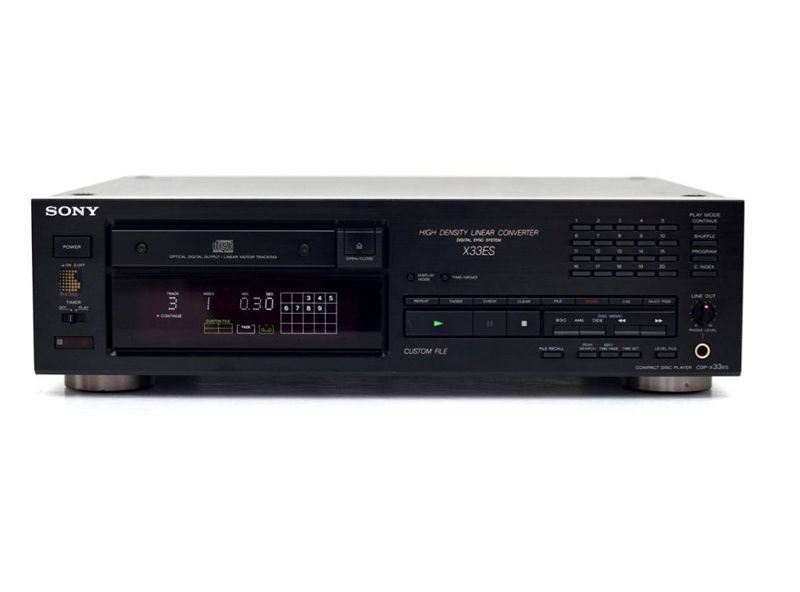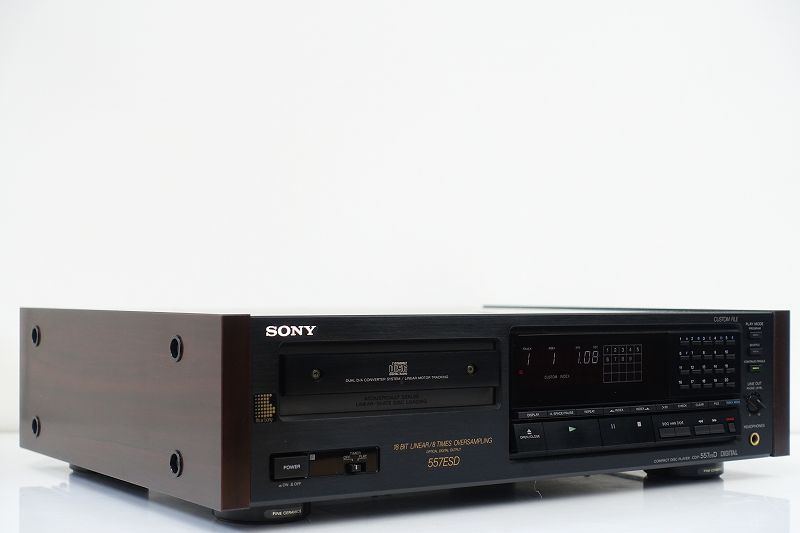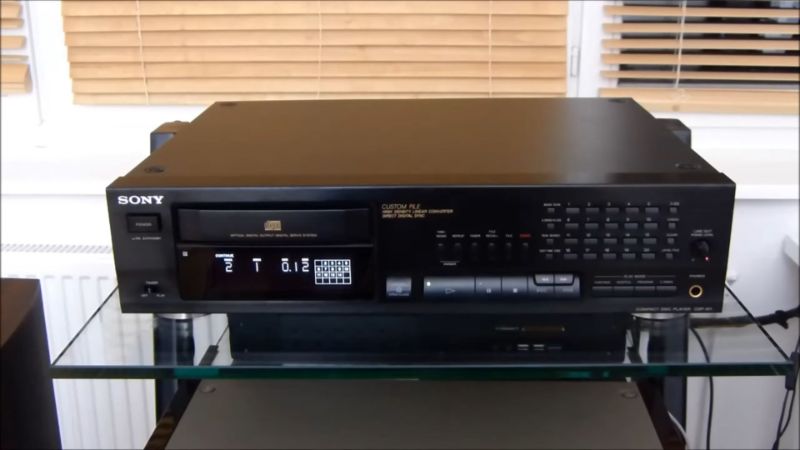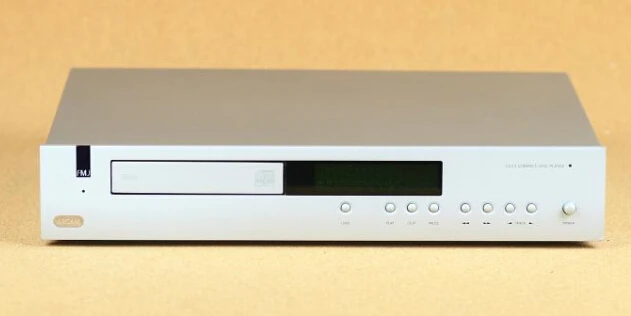When it comes to audiophiles’ critique of CD, Ken lshiwata of Marantz International gave his opinion at the end of the 1980s: “It will take some time for the digital medium to be regarded as an audiophile medium – given the shortcomings of the digital medium, I believe it will take around 5 years…”
Back then, Marantz was aiming to demonstrate that a competent application of digital technology may result in the creation of a perfect medium for recording and reproducing music signals. The result is the Marantz CD-12, which comes with the Marantz DA-12 digital/analog converter and the Marantz RC-12 infrared remote control (RC standing for Remote Control).
At the time, Philips products were sold in the United States in part by Philips and in part by Magnavox (both located in Knoxville). Nonetheless, Marantz is still Marantz and “a branch of Superscope,” a brand that began distribution in the 1960s in the United States.
Marantz went on to develop high-quality pre- and power amplifiers, as well as becoming the first to introduce a tangential arm turntable. Marantz is an American company, and its creator, Saul Marantz, is on par with hi-fi greats like Avery Fisher, Frank McIntosh, and James B. Lansing. They are legendary names from the early days of hi-fi.
The Marantz CD-12 is a European-Japanese affair that, like all Marantz products, is exclusively accessible in Europe and Japan. It is sold as a Philips gadget in the United States. A total of 1500 were made, with 500 going to Japan, 500 going to America (under the Philips label), and 500 going to Europe.
Ken Ishiwata had resided in Europe for some years and worked at several Philips offices and departments before becoming Senior Product Manager at Marantz Europe, where he was responsible for the Marantz CD-12, as well as many other great products.
So, what do we see inside? The scanning unit, converters, and remote control are all part of a three-part unit, each with its own enclosure. The scanning unit (the disc drive) has the program display, which can be used to read tracks, times, and functions. To control all functions, a large amount of electronics has been built in.
The CDM-1 arm mechanism houses the laser pickup that emits and absorbs the beam, albeit a Mkll version that is now made of aluminium alloy and is not sensitive to resonances. It’s almost identical to the one found in the earliest Philips players before they went to plastic.
The laser beam reflected by the disc travels through a mirror to a fiber optic wire at the back of the Marantz CD-12. When the cap is removed from that outlet, a blood-red beam appears, which can be seen at the end of the cable once the fiber optic cable is attached.
If you decide to tear down the machine, you should proceed with caution. The CD-12 sends the signal to the Marantz DA-12, which is a complex affair full of circuits and power supply. The DACs, which are selected for the precise conversion and filtering of the pulses, are appropriately housed in the Marantz DA-12. They have the Philips TDA1541A S1 type number and are 16 bit-4 times oversampling. Marantz continues to use the Philips technology that has been in use since the second generation of players.
Jitter had to be eradicated as part of the design process. The variation in the reading, as well as the alternating holding and passing of the samples, is referred to as “jitter”. This can occur even when fiber optic and coaxial cables are used, and it determines the purity of the highest frequencies in particular. According to the product description, the optical transfer from drive to converter via a customized optical cable with a Mika core provided the solution to eliminating jitter.
The Marantz DA-12 features three nicely shielded tiny toroidal transformers with accompanying power supply and the same number of protections that maintain watch via high-quality fuses, but the Marantz CD-12 disc drive with its function electronics is powered by a single transformer.
The signal routes, as well as all of the circuits, are mounted on crystal transparent epoxy printed circuit boards. The fiber optic cable and two grey cables with print: Mitshubishi Cable E 69233 are the only transport exceptions in the Marantz DA-12.
The Marantz CD-12 and Marantz DA-12 have the same housing. Both are structured in the same way. The side panels are extremely hefty, made of an aluminum-zinc alloy and reinforced with ribs. I once heard a French salesman jokingly ask if CD players would be tested soon to see if they are bulletproof.
Inside, boxes made of copper-plated sheet steel shield the various parts. They preserve the signal by counteracting magnetic, electrical, and vibrational forces. Copper is also used on the bed plate and the back. Even the screws had been soaked in copper. Plaster is used to fill the feet. Strong power cords are included too.
The Marantz DA-12 – which is just a glorified CDA-94 – automatically converts to the sampling frequency of 44.1 kHz when you connect and start a CD player. If you used a DAT recorder, the frequency would automatically change to 48 kHz. This is automatically changed to 32 kHz for digital radio transmissions (a frequency that the Philips LHH1000 does not have on board). The D/A converter in the new Marantz PM-95 integrated amplifier is nearly identical to the Marantz DA-12.
The remote control can be used on a variety of devices, not simply Marantz’s. You can configure the RC-12 with the codes from any other remote-controlled device you own (VCRs, KTVs, cassette decks, amplifiers, tuners). The Marantz RC-12 will then act as the control center for the complete setup. The other devices are not required to have the Marantz logo on them.
The materials and structure have been chosen with the greatest of care. The housings are champagne€ pink. This color may or may not be liked by everyone. However, that is probably not the most important issue.
The Marantz DA-12, like the Denon 3520, provides balanced outputs for connecting to professional equipment through XLR connections. The technical statistics also reveal that the dynamics have exactly 96 dB of dynamic range, which matches to the 16 bits of the compact disc format (1 bit stands for 6 dB). The signal-to-noise ratio is 101 dB. For those 16 bits, that’s more than plenty. At 100 dB, channel separation is superb.
Because of the usage of a 20 bit DAC, 8-fold oversampling, and analogue amplifier approach, Denon’s DCD-3520 receives a higher score: 100 dB dynamic range, 118 dB signal-to-noise ratio, and 110 dB channel separation. The Marantz players, as you may know, are based on Philips technology. The radial arm, in combination with the correction circuit, can bridge rather substantial disc faults. The faltering laser continues on its way. Dropouts with a spacing of 1.5mm will no longer be caught. The Marantz CD-12 also does not bridge two 1.5 mm drop-outs in a row. Regardless, they are all good buys.
We began testing the Marantz next to the Denon with a CD called Cantate Domino (Proprius PROD 7762), in which the church’s space, the voice, the choir, and the organ all reveal how openness and freedom are expressed, as well as whether deep registers are touched and how all of this occurs.
With reverberation and a soft tone, the Marantz created a sense of space. It’s stunning how refined the upper tones are. The singer’s voice was nearly entirely integrated, as if it were part of the choir and organ sounds, rather than being isolated. Despite the presence of low organ registers, which provided atmosphere to the whole, they were described as thin. The image had a nice height and depth, but the speakers limited the image’s width.
When the identical passage was played on the Denon, it took on a whole different tone. The space rose higher, deeper, and wider at the same time, extending beyond the loudspeakers to the left and right. The vocalist stood in front of the choir, distinct from the choir. The deep organ tones served as a sonorous and clear backdrop for the other noises.
The soundtrack of the film Koyaanisqatsi featured voices as well. The Denon’s male voices seemed threatening and a little rough. Soundtracks were not always made with the same attention to detail. Everything grew lighter and quieter on the Marantz, but also more dull and less present. BNL’s “Les Percussions et claviers de Lyon” featured a variety of percussion instruments, including xylophones, bells, a celesta, and so on. The Marantz reproduced the attacks of those instruments quite effectively and clearly. They were more solid, a little more heavier, and they stood loose in space via the Denon.
Another very touching track was Steve Miller’s “Born 2 B Blue”. The Marantz sounded sophisticated and calm. Sure, Steve was present, but it wasn’t until the Denon started playing the sound carrier that his presence was truly felt.
The colors of the Denon were presented a little more vividly in “The Cylinder” by the Modern Jazz Quartet (Atlantic). The Marantz is then a little more reserved, less showy, but it still produces a crisp, refined cymbal sound.
In “Autumn Rain,” Ahmad Jamal used the Denon to lay down the heavy registers in his grand piano in a sonorous and detailed manner. The Marantz became lighter once more, with a bass guitar that we thought was a little thin.
At the end of the day, we were once again faced with the question of what sounds “nice”, and what is represented accurately and realistically. It was clear that both players added their own “character” to the recordings. But is this really desirable?
Take, for example, Edith Knardal’s performance of Brahms’ Intermezzo. A polished grand piano sound emanates from the Marantz, which is trapped between the speakers. The Denon wins when it comes to openness and the sense of being present.
The Denon, without a doubt, has a thicker layer, which expands the space, breaks open, and is firmer in the midrange. That’s why we preferred them paired with Musical Fidelity’s clean and open MC4 speakers. On some speaker systems that already offer a strong sound, the warmer dynamics can be overemphasized, a feature that many Japanese can detect.
To conclude, Marantz CD-12/DA-12 is a more powerful version of the Marantz CD-94/CDA-94. It ultimately boils down to balancing personal preference against the quality of the rest of the system, the overall cost breakdown, and your personal budget.







